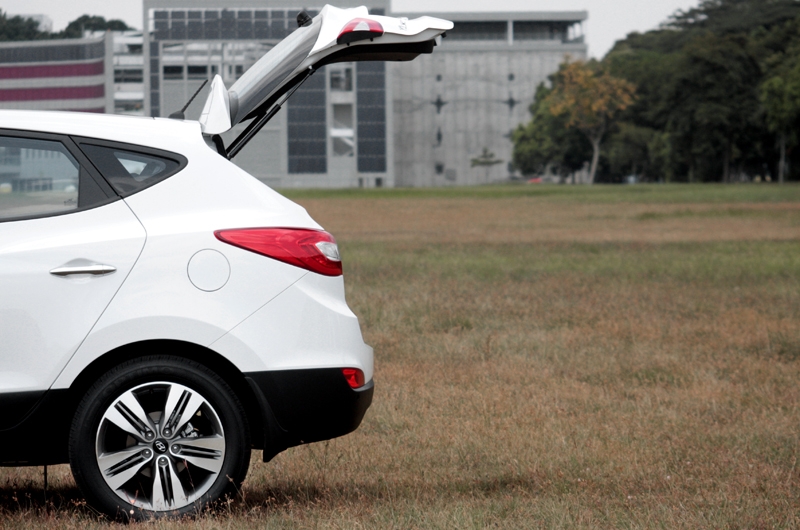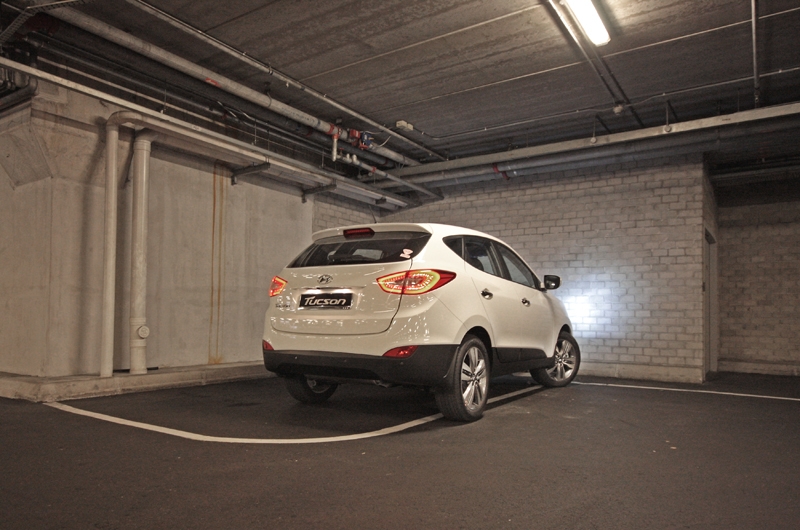It obviously needs no introduction, but this revamped Tucson is surprisingly good
Photos: Azfar Hashim
Test-driving an SUV as a motoring journalist is never an exciting proposition, especially when you’re looking at the mid-level segment. Not because yours truly here is obnoxiously proud, but because there are a number of players in this segment and in this day and age, most of them are so competent you have a hard time picking one really good one.
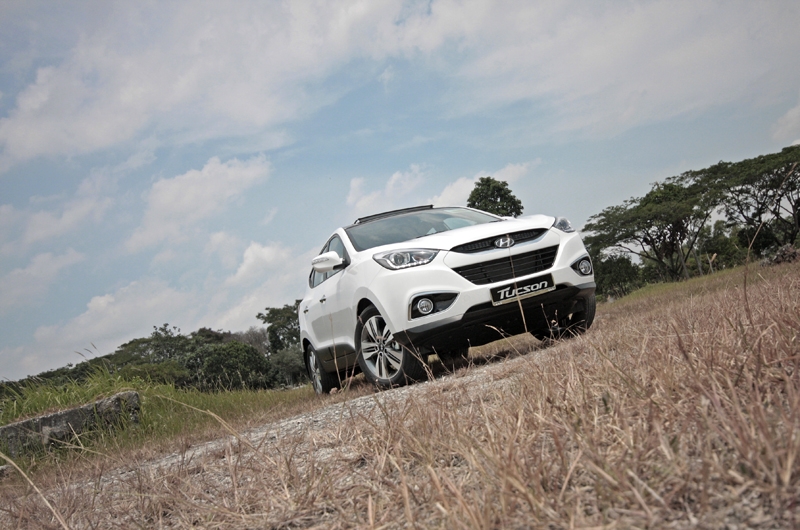
The Tucson is no new model. Now if you remember clearly, its predecessor was one of Singapore’s favourite SUV; it has strong following thanks largely (no pun intended) because of its size, affordable price and practicality. Although it’s thirsty, no one really bothered: where else can you find a sub-$100k SUV, right?
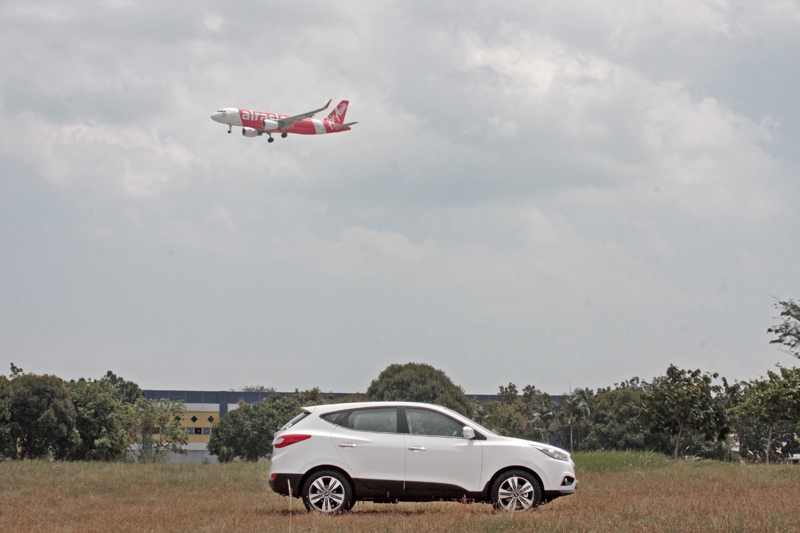
Along came the all-new model — known as the ‘Fluidic Sculpture’ (this was the design language Hyundai adopted) version. Bold, but nothing outstandingly special; which explains why it did not do as good. It does not help that with the new changes in legislation now, the asking price is doing no favour.
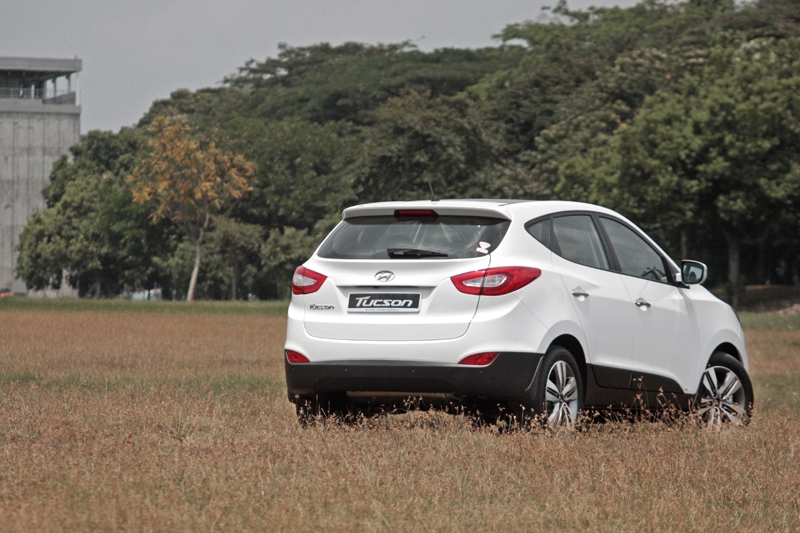
Then there’s this update — which we should probably call ‘Fluidic Sculpture version II’. Well I am not saying that this new Tucson will move mountains and change the brand and model’s luck in local context; but it is that good, you should take a closer look before heading elsewhere.
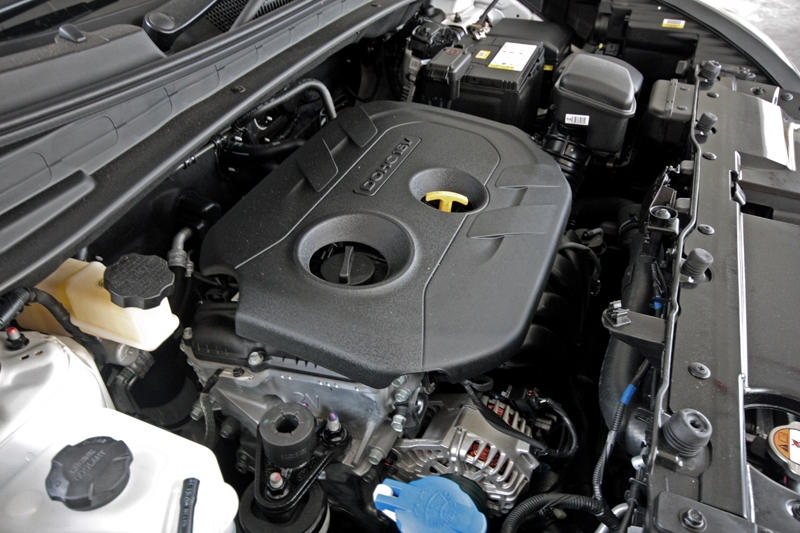
Here’s the most important part of this updated Tucson: the new engine. Hyundai claims it was developed in Europe, and it even gets a new name, ‘Nu MPI’ (previously Theta-II). Although there isn’t much information on this new 2.0-litre engine, news from the grapevine is the usage of more aluminium components to keep the engine weight down. On top of that, some tunings to improve smoothness especially at higher rev range.
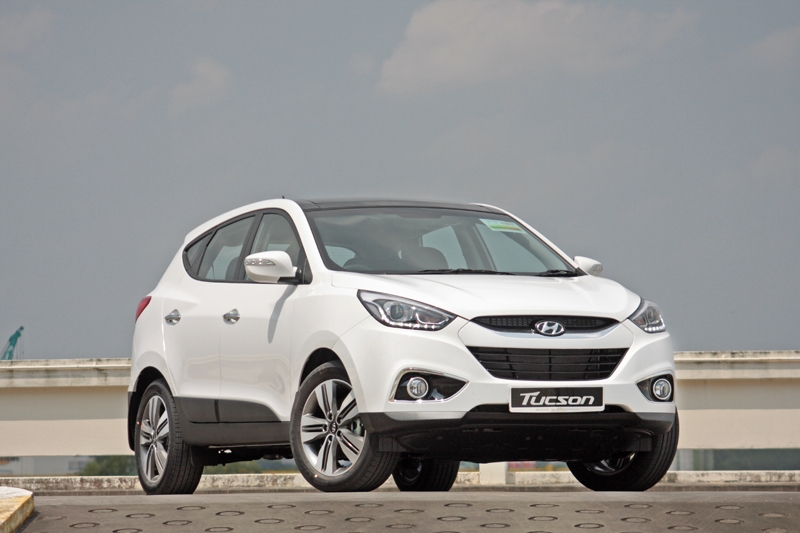
Paired to a six-speed auto transmission (no change here), it now whips out 151 bhp and 191 Nm of torque; despite now 15 bhp and 6 Nm down, the upside here is you get improved fuel consumption. According to Hyundai, it has a combined cycle of 8.4 litres/100 km (or 11.9 km/L) compared to the previous 11.4 litres/100 km (or 8.8 km/L). Oh, even the CO2 emission has dropped from 209 g/km to 200 g/km now; we can hear Green Peace giving a sigh of relief…
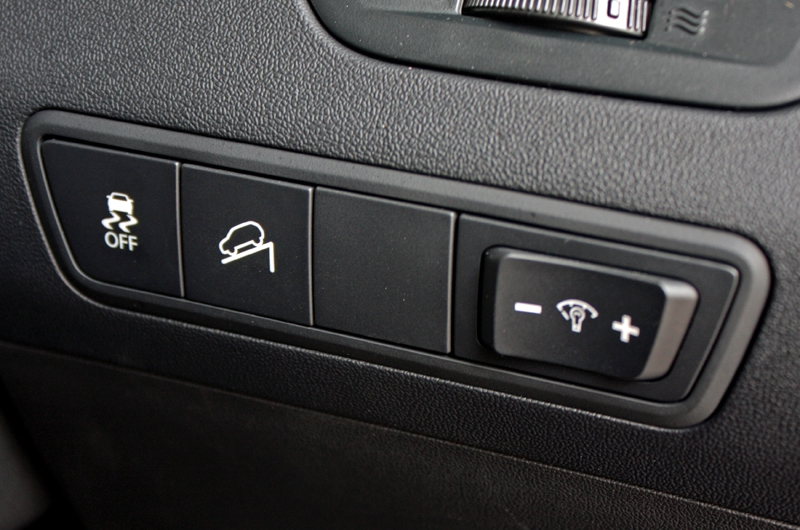
Surprisingly, this front-wheel driven Tucson also gets Hill Descent Control standard
Despite the lesser power this time around, the Tucson makes up for it by delivering slightly better response and most importantly in this segment, better refinement. Well you still need to give the accelerator pedal a hard prod to get it moving off the traffic light, but once on the move, it doesn’t feel lethargic; even the transmission swaps from 5th to 6th, or vice versa, rather smoothly. Speaking of gearbox, it might be caught doing it’s job at a leisurely pace but thankfully, Hyundai made the ‘+/-‘ function standard, giving you the option to swap your own gears.
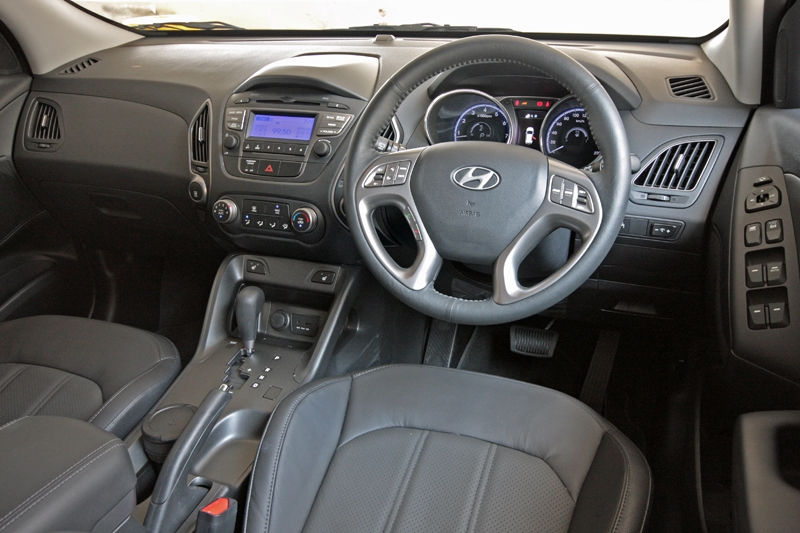
Now here’s where Hyundai got it all right. They obviously focused the cabin to be comfortable for all occupants: there’s that noticeable additional sound proofing now. You need to get the Tucson past 4,500 rpm before you actually hear any sort of unwanted noise. Even wind, road and tyre noise are better supressed — expressway cruises are rather, well, quiet. Inspired by Lexus eh, Hyundai? In this aspect, it gives the Toyota RAV4 something to think about…
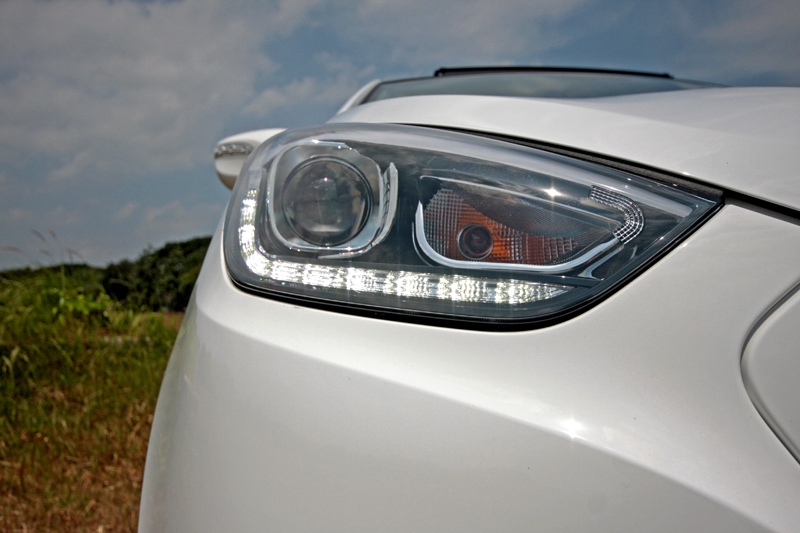
The exterior changes are subtle. You get LED daytime running light in the headlamp cluster now, including a pair of reshaped foglamps on the lower part of the front bumper. Then at the rear, a new set of tail lamps; somehow they look like a pair of eyes looking down on you at night though…
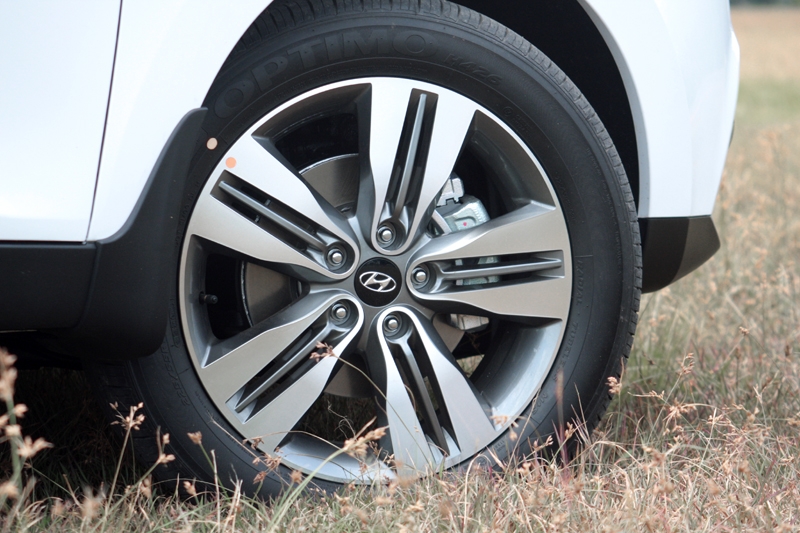
Besides those, a set of newly designed 18-inch alloys - paired with 225/55 R-18 Hankook rubbers - come standard too.
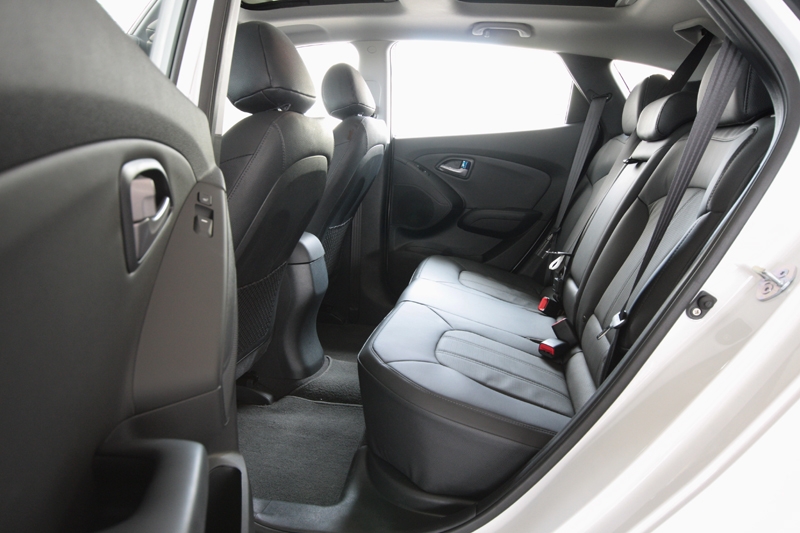
Interior build quality remains good, complimented by door panels, seats and steering wheel all wrapped in leather. Auxiliary input for smartphones, including Bluetooth connectivity, is factory-fitted. Driving position should be highly likeable for drivers of any sizes as the seat offers good amount of support. And surprise, surprise: sunroof and glass roof for rear passengers are not cost options, along with the reverse camera monitor that has been integrated into the rear-view mirror.
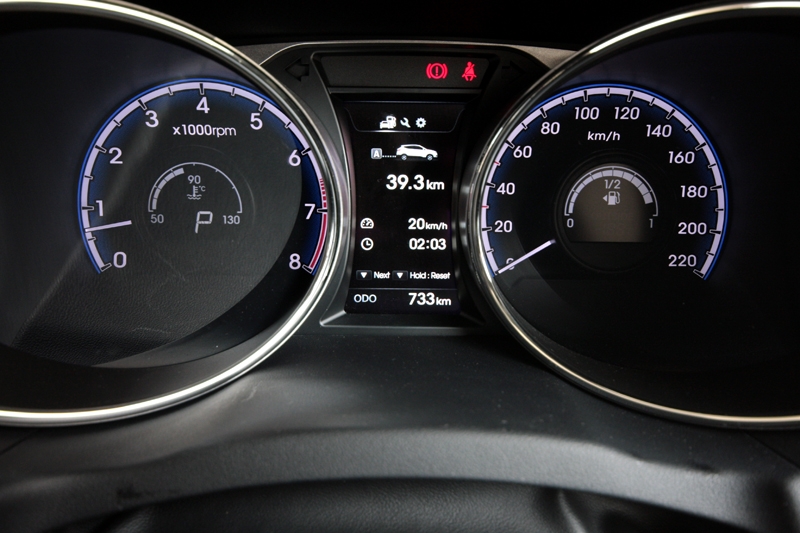
New here is the 4.2-inch TFT LCD screen - it gives you real time info (eg. average petrol consumption) - placed between the speedo and tachometer. By the way, the Tucson has good manners now, saying ‘Goodbye' every single time you switch off the engine.
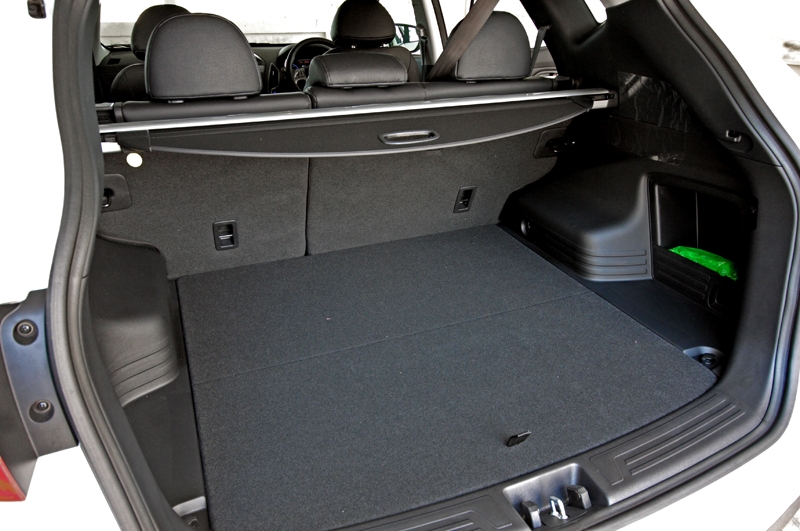
So as you can see, there’s nothing bad with the Tucson. It’s a complete family car, giving you good amount of cabin space and comfort and best of all, improved driveability. Generous equipment list is another plus point.
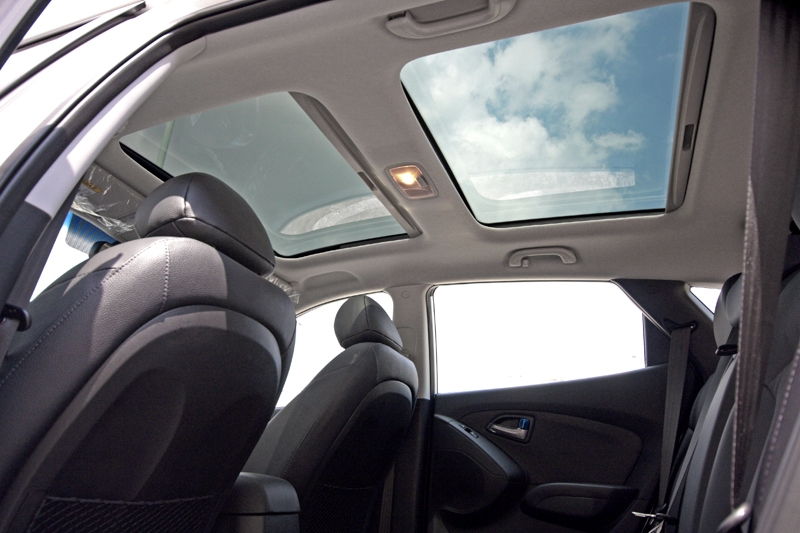
If there is one real problem here, it has to be the price. You get competition(s) in the form of Kia’s Sportage ($154,900), Subaru’s Forester ($151,400), Mitsubishi’s ASX ($150,999), Mazda’s CX-5 ($159,988), Nissan’s Qashqai ($147,800) and Ssangyong’s Korando ($140,888) all undercutting the $161,888 Tucson.
